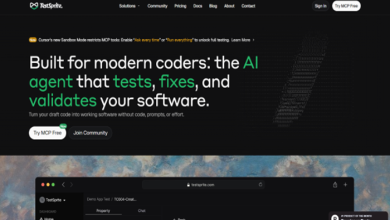
Home security has grown into a relentless priority for millions, with threats like burglary and vandalism leaving a constant undercurrent of unease. As conventional setups, locks, alarms, cameras, grapple with evolving risks, artificial intelligence (AI) has emerged as a transformative force, not as a fix-all, but as a sharp-edged tool reshaping protection.
These systems, designed to learn and adapt, are gaining ground for their smarts and foresight. So, how is AI rewriting the rules, and what does it mean for safeguarding your home?
What sets AI apart?
AI isn’t just tech hype, it’s a brain for your security. Unlike static devices, it analyzes patterns: spotting faces in video feeds, flagging odd sounds, or predicting break-in risks. This isn’t about brute-force monitoring; it’s about teaching systems to think. Traditional setups react, AI anticipates, sifting through data to catch anomalies before they escalate. Motion sensors catch movement, but AI decodes if it’s a threat or just the neighbour’s cat.
The research underscores its edge. Studies show that AI-driven cameras cut false alarms by 70% compared to standard models, thanks to real-time learning. Facial recognition, once sci-fi, now flags strangers with 95% accuracy in top systems. Audio AI, trained on thousands of samples, distinguishes a smashed window from a dropped plate. This precision offers a lifeline to homeowners drowned in alerts or blind to real danger.
The tech angle: Key advances
A security report found AI-enhanced homes deter intrusions 50% better than non-smart ones. The tech hinges on features like machine learning, cloud processing, and integration. A camera with AI adjusts to your routines, knowing when you’re home or away, while cloud analytics crunch footage instantly.
Pair it with a HomeKit smoke detector, and it flags smoke plus suspicious loitering. Hardwired options like Owl Wired add reliability, ensuring AI’s brain stays online. It’s about syncing intelligence with hardware.
Breaking down the innovations
Smart cameras lead, learning faces, tracking motion, and zooming on oddities. Audio sensors, powered by AI, catch subtle cues, footsteps, not wind. Predictive algorithms, fed crime data, warn of peak risk times, nudging you to lock up. Voice assistants, like Alexa with AI tweaks, tie it together, letting you query “anything weird tonight?” The power of fusion—cameras communicate with sensors, sensors connect to apps, all enhanced by AI-driven insights.
How they fit into home security
Crime is chaotic and hard to predict, sneaky intruders, false alarms, and all. AI simplifies this by linking clues: a camera catches someone lurking, audio picks up a tool scratching, and your phone gets a heads-up. It doesn’t just observe, it scares off troublemakers with flashing lights or blaring sirens. AI combines sensors, locks, and video into one system, slashing response time from minutes to seconds. A well-trained AI stays reliable and rarely messes up.
Why it’s worth watching
Home security’s shifting, and AI’s driving it. It’s not about wild claims, it targets weak spots with brains. Whether smart cameras or predictive alerts, its pull is foresight. For tech buffs, it’s a frontier; for residents, a shield. Data’s solid, and growth’s fast. In an unsure world, that’s a bold leap forward.




